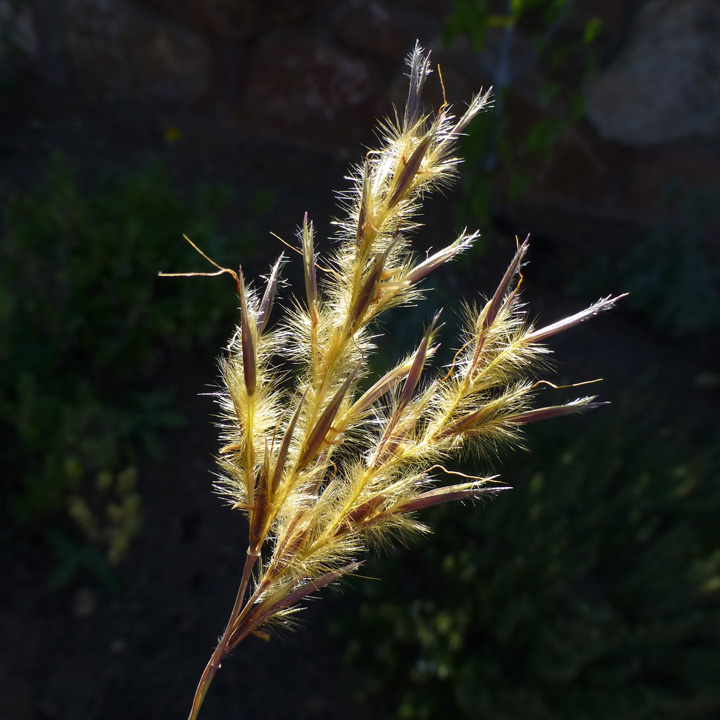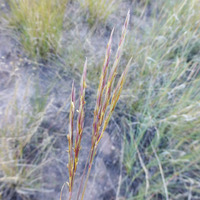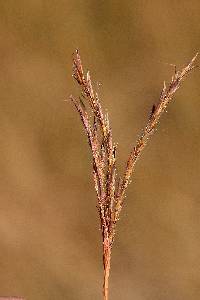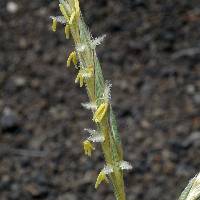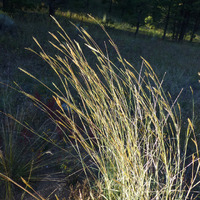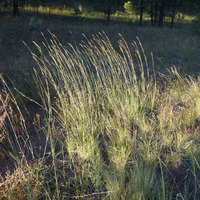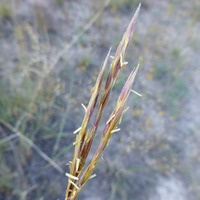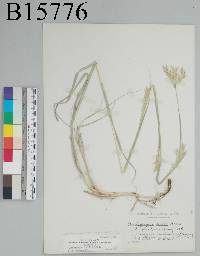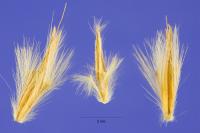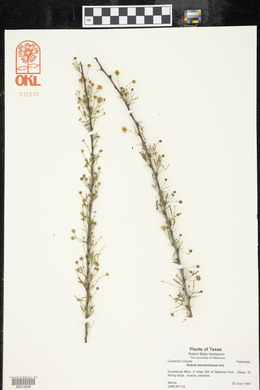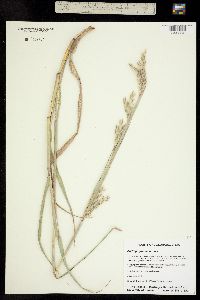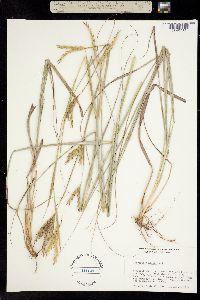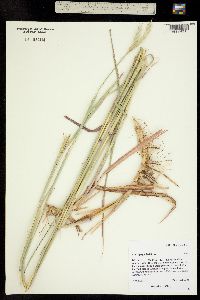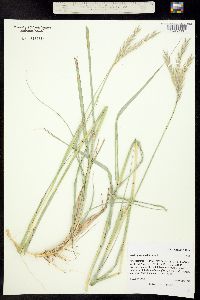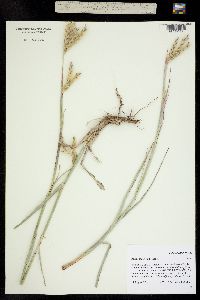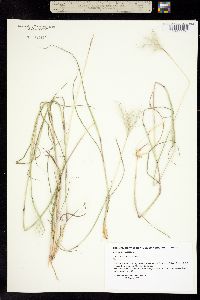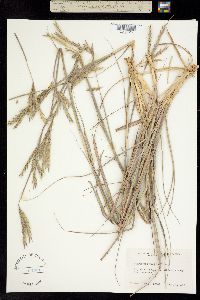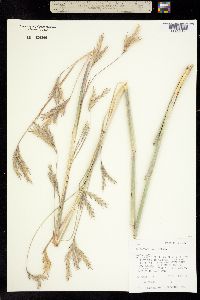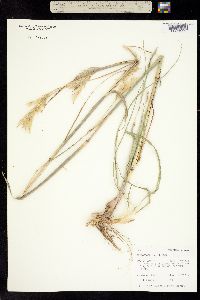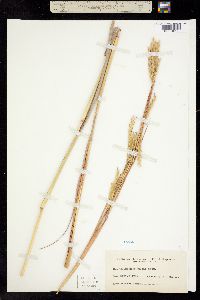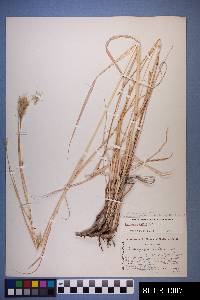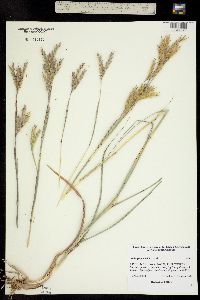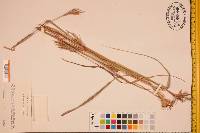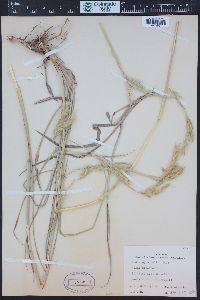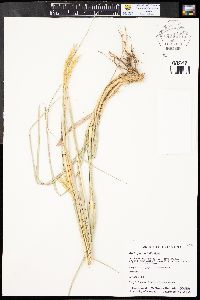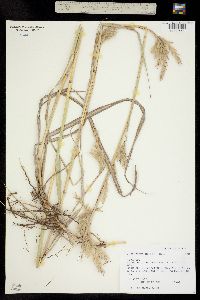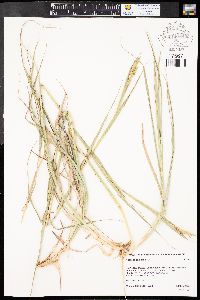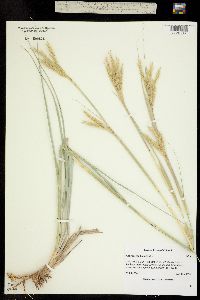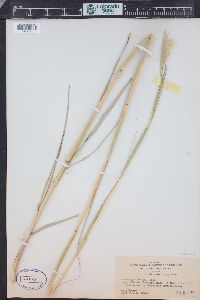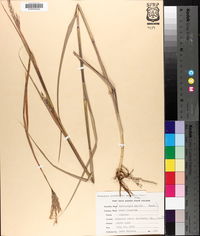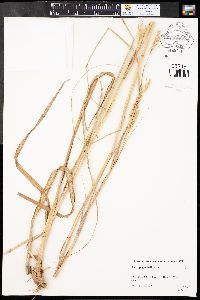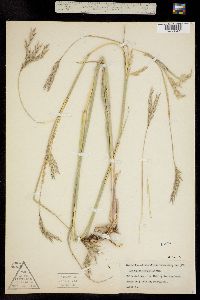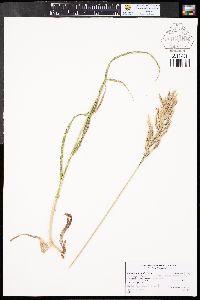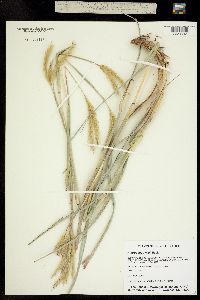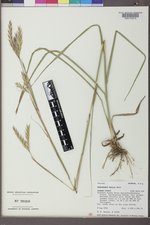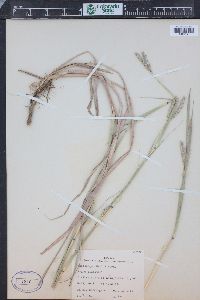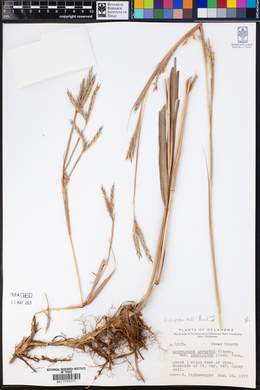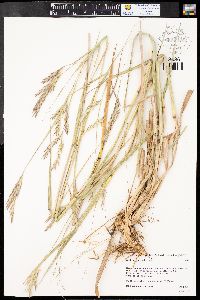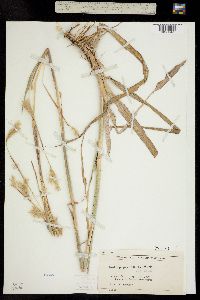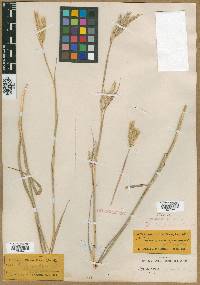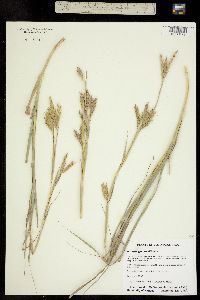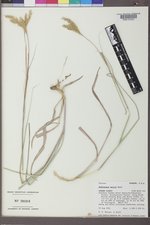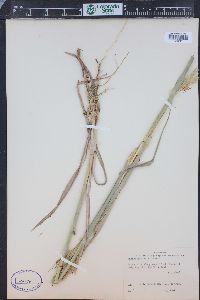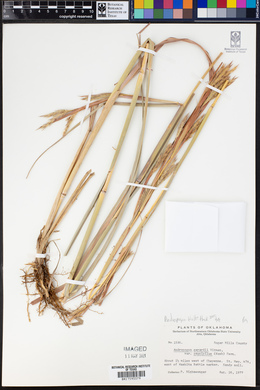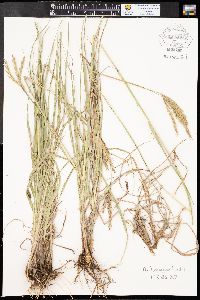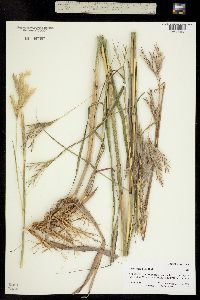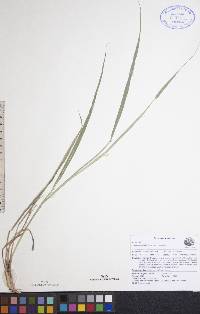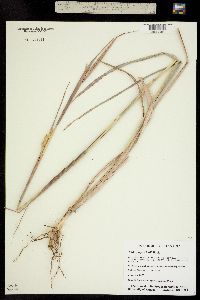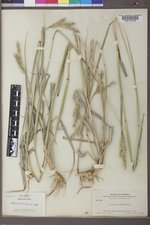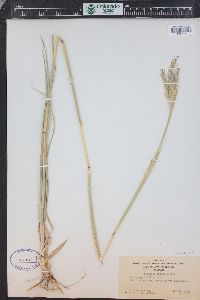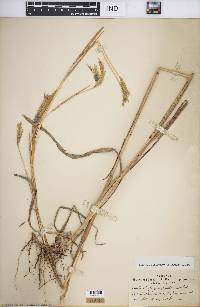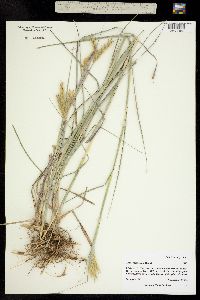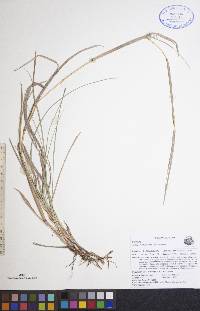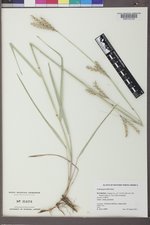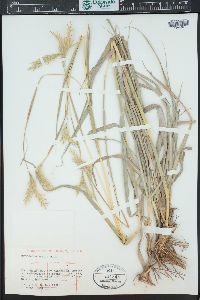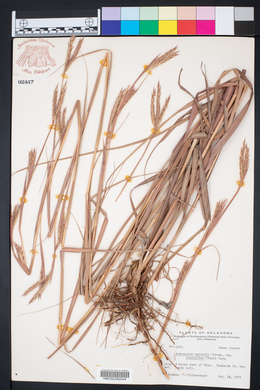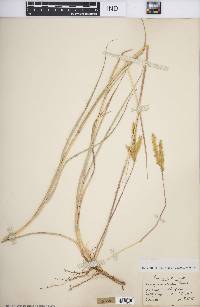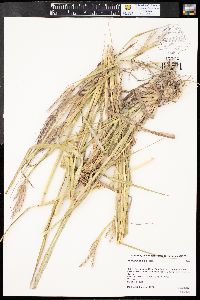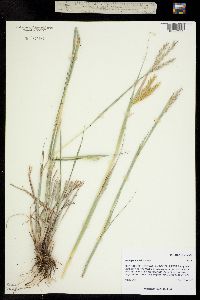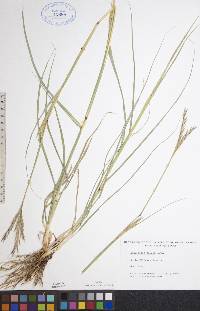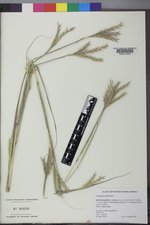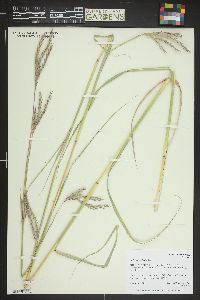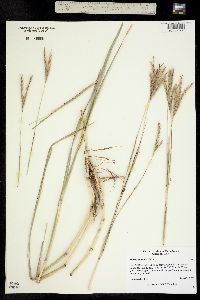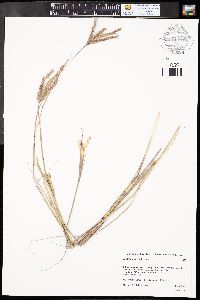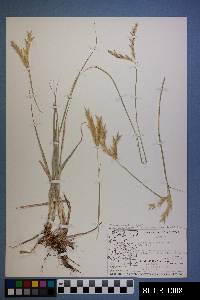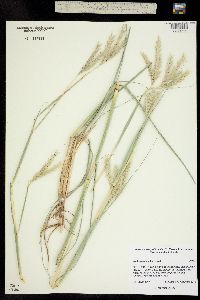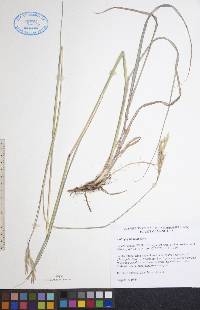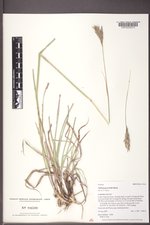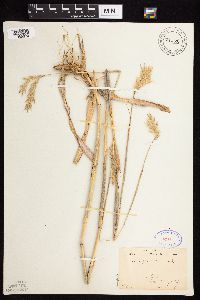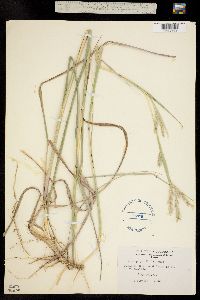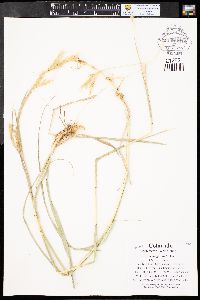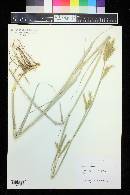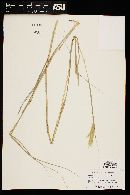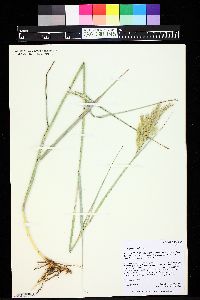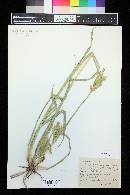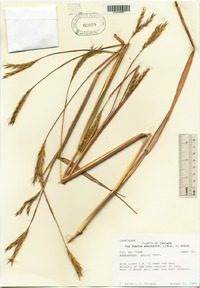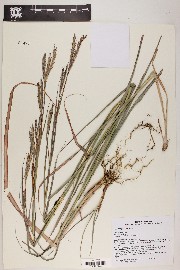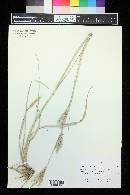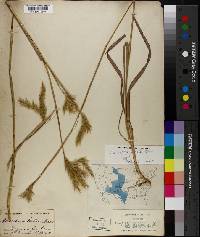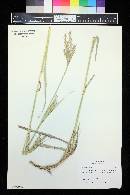Andropogon hallii
|
|
|
|
Family: Poaceae
Sand Bluestem
[Andropogon geminatus Hack. ex Beal, moreAndropogon gerardi subsp. hallii (Hack.) Wipff, Andropogon gerardi var. paucipilus (Nash) Fernald, Andropogon gerardii subsp. hallii Wipff, Andropogon gerardii var. incanescens (Hack.) Boivin, Andropogon gerardii var. paucipilus (Nash) Fern., Andropogon hallii var. bispicatus Vasey ex Beal, Andropogon hallii var. flaveolus Hack., Andropogon hallii var. incanescens Hack., Andropogon hallii var. muticus Hack., Andropogon paucipilus Nash, Andropogon provincialis var. paucipilus (Nash) Fernald & Griscom, Leptopogon flaveolus (Hack.) Roberty, Sorghum hallii (Hack.) Kuntze] |
Plants strongly rhizomatous, rhizome internodes often longer than 2 cm. Culms (40)60-150(200) cm, strongly glaucous. Ligules (0.9)2.5-4.5 mm, ciliate; blades 3-40(51) cm long, (1.5)2-10 mm wide, often pilose, at least near the collar. Inflorescence units usually only terminal; peduncles with 2-7 rames; rames 4-7(9) cm, exserted at maturity; internodes usually densely pubescent, hairs 3.7-6.6 mm, often strongly yellowish. Sessile spikelets (5)6.5-12 mm; lower glumes often ciliate; awns absent or to 11 mm; anthers 3, (2.3)4-6 mm. Pedicellate spikelets 3.5-12 mm, usually well-developed and staminate. 2n = 60 (usually), 70, 100. Andropogon hallii grows on sandhills and in sandy soil. Its range extends through the central plains into northern Mexico. It is similar to A. gerardii, differing primarily in its rhizomatous habit, more densely pubescent rames and pedicels, and greater drought tolerance. Andropogon hallii and A. gerardii are sympatric in some locations. The two species can hybridize and are sometimes treated as conspecific subspecies. Perennial herb with rhizome internodes longer than 2 cm 40 cm - 2.1 m tall Leaves: with 0.9 - 4.5 mm long, membranous, ligules lined with hairs along the margins. The blades are 3 - 50 cm long, 1.5 - 10 mm wide, linear, and usually soft-haired (especially by the collar). Inflorescence: terminal, usually yellowish, with two to seven spikes 4 - 9 cm long, the internodes usually densely covered with hairs 3.7 - 6.6 mm long. Fruit: a caryopsis. Culm: erect, highly branched above, 40 cm - 2 m long, covered with a whitish waxy coating (glaucous). Spikelets: either stalkless or stalked. The stalkless spikelets are bisexual and 5 - 12 mm long, and the stalked spikelets are male, 3.5 - 12 mm long, and well-developed. Florets: of the stalkless spikelets have a lemma that usually ends in an awn to 11 mm long and three anthers 2.3 - 6 mm long. Lower glume: thinly leather-like, usually lined with hairs along the margins, with two longitudinal ridges that are usually winged. Similar species: Andropogon virginicus is easily distinguished because its inflorescences are shorter than 5 cm, the stalked spikelets are absent or rudimentary, and the florets usually only have one anther. Andropogon gerardii differs by having awns 8 - 25 mm long, ligules 0.4 - 2.5 mm long, and rhizomes (if present) with internodes to 2 cm long. Flowering: July to September Habitat and ecology: Introduced from the western United States, this species is very rare in sandy soil. Occurence in the Chicago region: non-native Etymology: Andropogon comes from the Greek words aner, meaning man, and pogon, meaning beard. Hallii is named after Elihu Hall (1822 - 1882), the discoverer of the species. Author: The Morton Arboretum FNA 2007, Utah Flora 1983 Common Name: sand bluestem Duration: Perennial Nativity: Native Lifeform: Graminoid General: Sod-forming bunchgrass that can reach heights of 1.5-2 meters, solid stems with grooves on one side, strongly ridged leaf blades. Vegetative: Strongly rhizomatous, rhizomes can have internodes >2 cm; stems 60-150 cm long, glaucous; ligules ciliate, 2-4 mm long; leaf blades to 40 cm long, 2-10 mm wide, 2-ranked, often with slender hairs at base; leaf sheath mostly open, glabrous. Inflorescence: Inflorescence a panicle, generally one per stem, with 2-7 branches, rames 4-7 cm long; internodes pubescent with yellow hairs 3-6 mm long; spikelets paired with 1 sessile and 1 pedicellate; sessile spikelets, with 2 florets, 6-12 mm long, < 3 mm wide; glumes equal or subequal, keeled, often ciliate; awns may be absent or < 11 mm long. Ecology: Found on sandy or sandy loam soils in arid environments in prairies, desert scrib, grasslands, and pinyon-juniper woodlands from 3000-7000 ft (900-2134 m) in elevation; flowers July-September. Distribution: Midwestern states: westernmost states include Arizona, Utah, Wyoming and Montana; easternmost states include Illinois and Indiana. Notes: Is an important component of prairies, is thought of as a climax species; quality forage for livestock; is similar to but differs from A. gerardii by having has well developed rhiizomes, has sessile spikelets with no or short (<11 mm) awns and ligules 2.5-4.5 mm long, and lives in drier environments; A. gerardii and A. halii have been known to hybridize. Ethnobotany: Used for erosion control, regeneration of prairies and other grassland, forage for livestock, and as an ornamental with landscaping. Etymology: Andropogon comes from the Greek andros, meaning man, and from pogon, meaning beard; in reference to the spikelets' hairs, resembling a man's beard Editor: Lkearsley2012 Culms 1-2 m, from long rhizomes; pedicels and joints of the rachis densely bearded with long (usually 4-6 mm) pale to golden hairs; spikelets 9-12 mm; awn of the fertile lemma 0-5 mm, straight; 2n=60, 70, 100. Sandy prairies; Io. to Mont., Ariz., Tex., and n. Mex.; disjunct in Bureau Co., Ill. Said to intergrade with no. 1 [Andropogon gerardii Vitman]. Gleason, Henry A. & Cronquist, Arthur J. 1991. Manual of vascular plants of northeastern United States and adjacent Canada. lxxv + 910 pp. ©The New York Botanical Garden. All rights reserved. Used by permission. |

